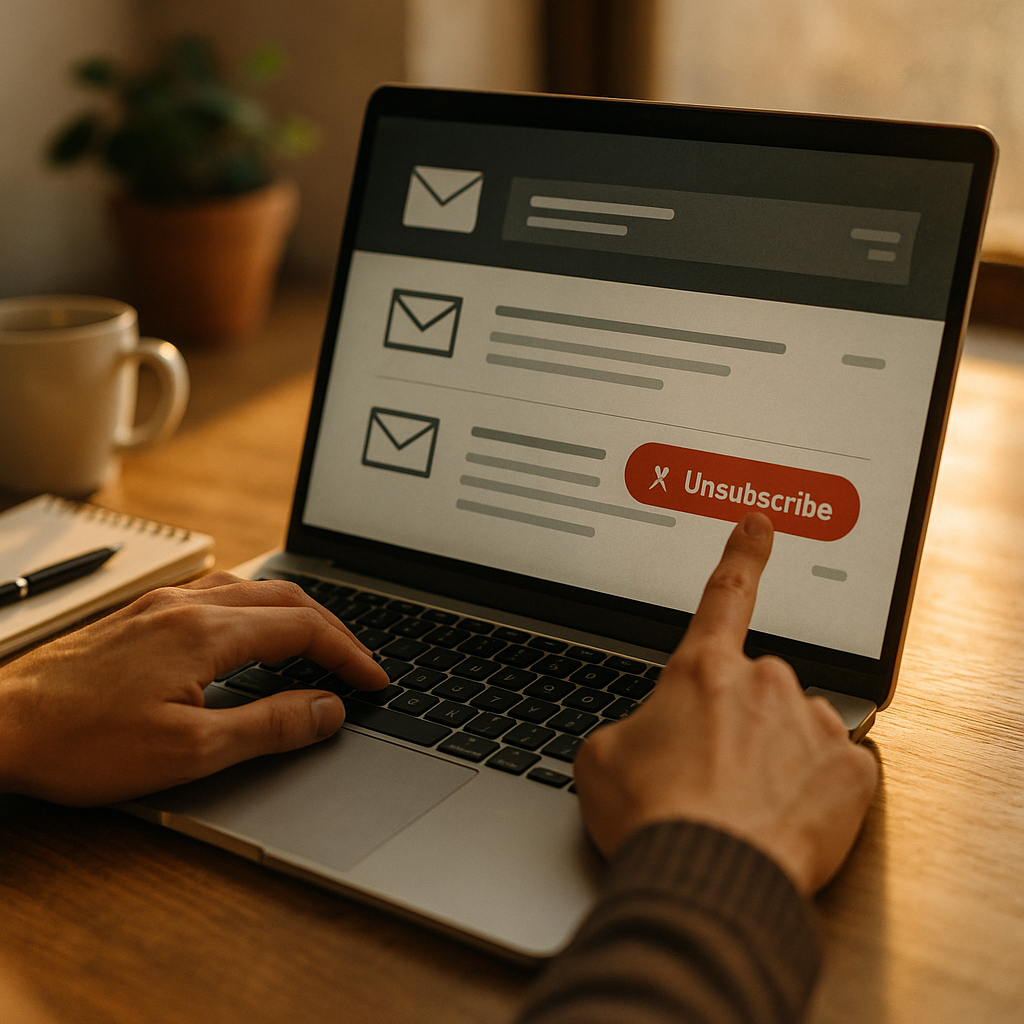Email marketing remains a powerful tool, but even experienced marketers can encounter setbacks. A high unsubscribe rate often signals missed opportunities or missteps within an email marketing campaign. By examining the root causes and solutions for this common challenge, you can transform every unsuccessful campaign into a stepping stone toward email marketing excellence. So, why do promising campaigns lose so many subscribers?
Evaluating Unsubscribes: Understanding Email List Health
Monitoring unsubscribe rates is essential to maintain email list health. According to recent benchmarks, a typical unsubscribe rate should range between 0.2% and 0.5% per campaign. Surges in this metric are warning signs—indicating recipients disengaged enough not only to ignore, but to actively opt out. List health affects sender reputation, deliverability, and ultimately, campaign ROI.
Before diving into causes, measure list attrition alongside other signals—spam complaints, open and click rates. Segment your data by acquisition source, content type, and campaign frequency. Use these insights to identify patterns and at-risk segments within your audience.
Pinpointing the Causes: Content Relevance and Targeting Mistakes
Poor campaign performance often stems from issues with content relevance and audience targeting. Content that feels generic, overly promotional, or misaligned with recipients’ interests prompts frustration. In 2025, personalization is a minimum expectation—generic blasts quickly lose their appeal.
- Outdated segmentation: Sending identical content to all subscribers ignores evolving preferences and lifecycle stages.
- Poor timing: Too-frequent or ill-timed emails can fatigue even loyal followers.
- Unclear value proposition: If recipients don’t see continued value, they’ll leave.
Continually refresh your email segments using behavioral data—such as past purchase history or content interactions—and test multiple versions to improve resonance and reduce unsubscribes.
Design and Deliverability: Oversights That Drive List Churn
Email design directly affects engagement. If emails are difficult to read on mobile (which over 65% of users rely on as of 2025), slow to load, or filled with overwhelming graphics, recipients quickly lose interest. Additionally, emails that land in spam folders rarely get a second chance.
- Ensure mobile responsiveness by testing across major devices and email clients.
- Balance image-to-text ratio—avoid image-only emails, which often trigger spam filters.
- Test subject lines for clarity and avoid misleading phrasing, which irritates subscribers.
Proactively manage sender reputation by monitoring deliverability metrics. Use authentication protocols (SPF, DKIM, DMARC) to increase trust and reduce the chances of your messages being filtered out or ignored.
Transparency and Consent: Meeting Subscriber Expectations
Trust is at the core of any successful email relationship. If your sign-up process lacked transparency or pre-checked boxes led to unwanted emails, subscribers may feel ambushed with irrelevant content. In 2025, strict compliance with consent regulations—such as GDPR and evolving local laws—also directly affects unsubscribe rates and customer trust.
- Show clear expectations at sign-up—frequency, type, and value of emails.
- Offer visible and straightforward preference centers, so subscribers can tailor their experience without leaving your list entirely.
- Honor unsubscribes promptly and provide feedback opportunities for exiting users.
Cultivating a transparent process demonstrates your commitment to respecting subscriber preferences and privacy.
Analyzing and Optimizing: Learning from Campaign Post-Mortems
After a high-unsubscribe campaign, conduct a structured post-mortem. Review every step—from strategy through execution—identifying assumptions and gaps. Use these techniques:
- Analyze drop-off points: Link spikes in unsubscribes to specific messages or series’ within the campaign cycle.
- Survey lost subscribers: Short, simple exit surveys clarify dissatisfaction and suggest improvements.
- A/B test future content: Experiment with personalization, frequency, and calls to action—adopt data-driven adjustments.
- Document findings: Share actionable insights across your team to prevent repeat mistakes and foster continuous improvement.
This disciplined approach turns every high unsubscribe rate into a learning opportunity, building a long-term, loyal audience base.
Preventing Future Mistakes: Email Frequency and Value Alignment
Even the best content can drive unsubscribes if delivered at the wrong cadence. Inboxes are crowded. Consider a subscriber-first approach for timing and content type:
- Allow subscribers to choose their email frequency (weekly, monthly, etc.).
- Set clear expectations about list benefits and stick to promises.
- Segment disengaged users and reduce message frequency before attempting re-engagement.
The goal is to send fewer, but higher-quality emails that recipients want to open. Pair strong CTAs with valuable, exclusive offers to keep open rates high and unsubscribes low.
Conclusion
High unsubscribe rates in email marketing are warning signs, but also opportunities for growth. By understanding their root causes—content relevance, targeting, design, transparency, and value—you can refine your strategy, boost retention, and foster real loyalty. Every campaign post-mortem is a step toward building a more engaged and resilient subscriber community.
FAQs: High Unsubscribe Rate in Email Marketing Campaigns
-
What is considered a high unsubscribe rate in email marketing?
Although averages vary by industry, a rate above 0.5% is typically viewed as high and warrants investigation. Fast spikes—especially above 1%—signal immediate issues with relevance or volume.
-
How can I reduce unsubscribe rates in future campaigns?
Improve personalization, segment your audience, optimize send frequency, and ensure transparent opt-in processes. Run regular A/B tests to refine content and monitor analytics closely for early warning signs.
-
Should I worry about unsubscribes, or are they just normal?
Some attrition is natural, but a sudden or sustained high unsubscribe rate signals deeper issues. Reviewing and refining your strategy regularly helps maintain email list health and campaign success.
-
Can asking for feedback during the unsubscribe process help?
Yes, prompt exit surveys or feedback forms offer valuable insight into why subscribers are leaving, enabling you to make targeted improvements to future campaigns.
-
Does sending fewer emails really reduce unsubscribes?
Strategically reducing frequency—especially for less engaged segments—can significantly lower fatigue and unsubscribes, as long as each email delivers clear value.
